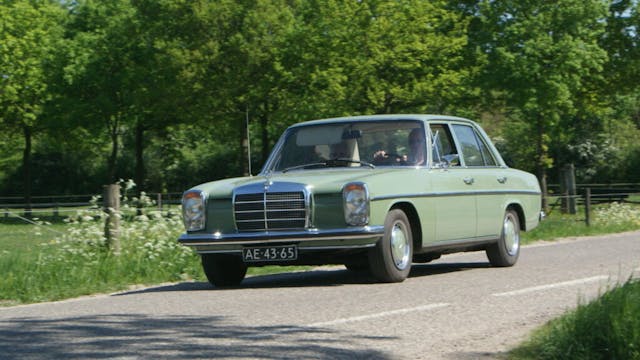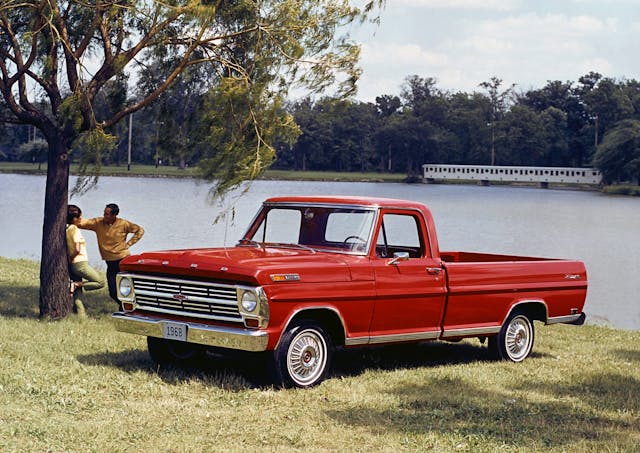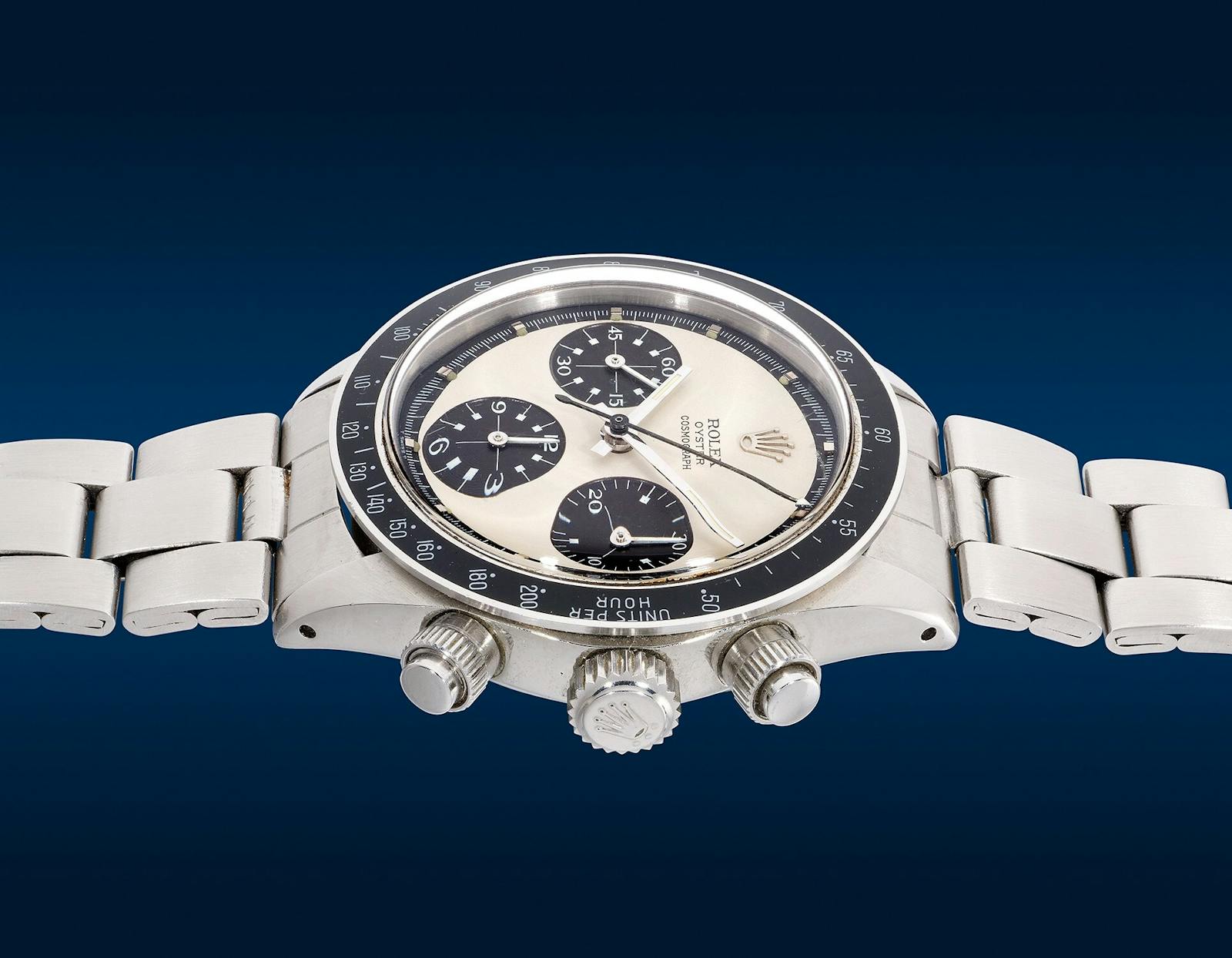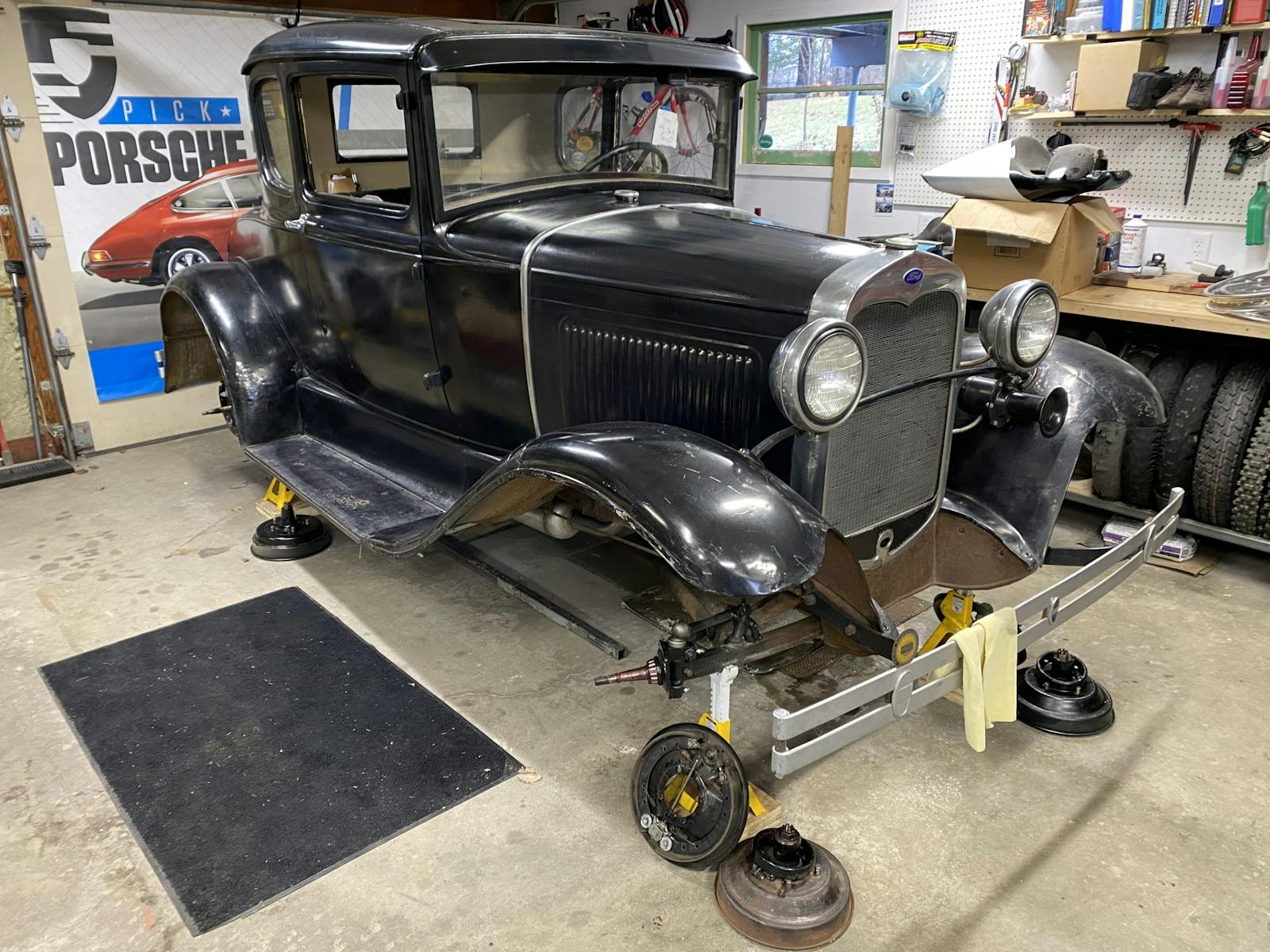5 classics heating up in the 2023 Price Guide
“Active” would be an apt description of the collector market over the first quarter of 2023. “Nuanced” would be another. In recent Price Guide publications, we could rely on more consistent value increases across the board, but that’s not the case this time around. The result has been very mixed, with some models putting up huge gains still and others contracting in value. The handful of cars that posted big gains were spread across wildly different market segments and price points. Let’s take a deeper look at the most notable value increases and what their changes mean.
1968-1973 Mercedes-Benz 220 +40%

Here in the states, Mercedes-Benz is best known for producing luxury cars with panzer-level ruggedness. The W114/W115 chassis might not have been the pinnacle of the brand’s luxury offerings, but it was pretty stout. And, with nearly two million produced, they were absolutely everywhere. Of the series, the W115-based 220 experienced some big bumps in value in our latest update. Even with the recent increases, a prime example can still be had under $20,000. This is notable for a couple reasons: there are still interesting, sub-$20,000 cars in circulation, and even high-volume cars are getting some love as their higher-priced siblings have crept out of reach for many collectors.
1967-1972 Ford F-Series Pickups +37%

Yet again, trucks are the hot ticket. This side of the market has been on a tear for well over a decade and it shows no sign of significantly backing off. As trucks from the early ’70s and prior have appreciated out of reach for many, attention has shifted to ’80s- and ’90s-era vehicles, along with a select few from the 2000s. Despite that, recent value shifts make it apparent that collectors aren’t quite ready to walk away from older models.
This past quarter, we recorded huge movement for 1967-72 Ford F-series pickups—to the tune of 37 percent. What gives? One likely contributor were the auctions in Kissimmee and Scottsdale, where trucks flourished. Modified trucks wowed with big numbers, but sales of stock examples—the vehicles we use for Price Guide valuation data—exceeded expectations as well. In addition, the F-series had some ground to make up when compared to the 1967-72 Chevrolet and GMC C/K-series trucks, which had commanded a premium over its Blue Oval competition for a while.
1969-1970 Pontiac GTO Judge Ram Air IV +36%

The muscle car market has been one of the most volatile and nuanced segments of the market going into the beginning of the year, with some series still increasing in value by leaps and bounds and others edging back. The biggest surprise comes to you curtesy of the 1969-70 GTO Judge, specifically the ones equipped with the high-performance Ram Air IV engine.
The 36 percent increase reflects a strong showing of GTOs in January. Of all the cars offered, nearly every one of them shattered their condition-appropriate price guide estimates. The takeaway here is that high-spec cars in exceptional condition are still garnering strong prices in many cases. What the muscle car market looks like down the road remains to be seen, though. Prices are mixed overall, and that could indicate that the segment is approaching a peak.
1946-1948 Pontiac Streamliner +35%

There’s another Pontiac in the latest Price Guide update that merits mention—one from an era that rarely snags the spotlight. American cars produced immediately after World War II fall in between segments of interest for collectors: they’re not old enough to be grouped with prewar cars even though their designs were carryovers from when production stopped for the war effort, and they precede the late ’40s and early ’50s jet-age styling we closely associate with the postwar era.
Likely for this reason, cars like the 1946-48 Pontiac Streamliner have maintained a steady value for years, only seeing a noticeable increase now. Despite the big bump, these vehicles remain relatively affordable: a Streamliner coupe in near-perfect condition is still a sub-$50,000 car, and excellent-condition cars trade for just under $30,000. After lagging behind while the rest of the market posted huge gains, these cars have finally caught up. Usually in cases like this, future increases like this aren’t in the cards, but time will only tell.
1973-1980 Ferrari Dino 308 GT4 +33%

Dinos are on the rise, although this model is distinct from the 206 and 246 Dinos that have captured headlines over the last eighteen months. We’re talking here about the 308, which saw strong gains this past quarter. While V-8-powered (the Dino name is usually associated with V-6-equipped cars), the 308 GT4 was also sold under the Dino banner for the first few years of production.
Here’s the most noteworthy bit: The 308 GT4 is starting to close the value gap between it and the more striking two-seater 308 GTB of the same period, which posted slight losses over the past quarter. It is unlikely the 308 GT4 will see additional large increases like this in the near future. Still, its gains indicate that there is still plenty of movement in less expensive Ferraris despite the broader market’s mixed outlook.
***
Check out the Hagerty Media homepage so you don’t miss a single story, or better yet, bookmark it. To get our best stories delivered right to your inbox, subscribe to our newsletters.
Via Insider



Where does the 1973 450 SL Mercedes Benz stand in terms of being the next classic car to keep your eye on. In terms of beauty it has always been a favorite of mind.
Good one to follow. I owned a 250SL and a 280SL, both of which I should have kept. My last was an ‘86 560SL, an extraordinarily competent car and a pleasure to drive at high speed on the highway.
I have one in Lapis Blue. After 50 years the car is still very tight and a pleasure to drive. It’s a real looker, especially the ’73 with the small chrome bumpers. Later years had the big clunky rubber bumpers and performance suffered with smog equipment.
Agree! My ’73 SL is a great driver, and turns heads everywhere it goes.
A totally usable fine vintage Mercedes.
I’m starting to get offers to purchase my 1982 F250 that I bought in 2004 for $100. It ain’t pretty but it runs very well and is cheap as dirt to maintain. I think the bullnose design has a lot going for it with its understated yet strangely elegant simplicity. A classic in the making?
I had an ’83 “Bullnose” Bronco XLT for 17 years. I loved the look of that front end. The following “Brick Nose” Ford trucks were ugly. I now have a ’95 “Aero Nose” XLT Bronco. Close to the ’83 in looks but still no cigar.
I’m strictly a Chevy buyer, but I agree the bullnose Fords were the most stylish by far for many years after. The bricknose following it was butt-ugly and the next gen wasn’t anything special. Then the minivan front styling was another huge downgrade. Ford F150s didn’t get their style mojo back until about 2010ish?
So glad I oiled and covered my 68 f250 in 1994, I am in a restoration phase with it now going on 3 years, every dollar I put into it gives me back two, hope the market still holds true when I am finished
I had a ’70 Ford pickup, that gas tank behind the seat was a joke – a rubber sleeve connecting to the filler cap that would occasionally come loose. ‘Should have been a recall.
Never had another Ford – Power wagon, a couple Chevys then Toyota
Remember, the Chevy truck had the same setup and there were several lawsuits from fatalities. Being honest, I am a Ford guy and when I restored a 55 Ford Truck, I installed a fuel cell under the bed of the truck.
Both “instant classics,” and both had some interesting design shortcomings. I’d bet both makers were genuinely shocked that their styling ventures caught on and the products were so widely used as respectable personal transportation, not just hay bale haulers. The rear cab supports were weak on both, and after a few (“enough”) years the arse-end of the cab would be sitting on the frame, several inches out of true — with the rest of the truck still good.
Yeah, they were all that way for decades!
Toyotas unintentional accerelation, engine sludge and camshaft cover ups are way more disturbing than that gas tank design
I had a 1952 F-1 PU for years. The tank was behind the seat with a rubber hose to the filler cap. Never had a problem with it. Probably the safest location, even if losing storage space behind the seat. Think a rear mounted, or under the frame is safer? I don’t. Besides, if you are hit hard enough to rupture that behind the seat tank, you are toast anyway. LOL, “Toast”, get it?…..
….RooDog….
In your description of the GTO, you stated “What the muscle car market looks like down the road remains to be seen, though. Prices are mixed overall, and that could indicate that the segment is approaching a peak.”
Two questions:
1. Does that comment reflect your opinion on all “muscle cars” from the ’60s and early ’70s, and
2. If we are near a peak, is that because you project fewer buyers (as we Baby Boomers are getting into our later years!) are interested in these cars?
Good questions. In these articles we try to leave opinion out of the mix and let the data speak but try to interpret.
There is a companion piece that is out to this one that discusses how 64-67 GTOs lost 14%. Point being that the market for muscle cars is finding its footing after a couple years of sharp gains. Interpretation being that with some models losing value, and a few, important cars still posting big gains, we might be on the cusp of a market peak, which is honestly higher than pre-2008. But the price guide is very data and results driven, so we will have to wait and see what shakes out.
But here’s my opinion on muscle cars, I don’t think baby boomers aging out of the market would cause a peak, if anything I’d come to that conclusion they they’re aging out en masse if the muscle car market was in a rout, which it currently isn’t. Personally, I think the muscle car era is too important for values to go to nothing. If we look at the prewar market for clues (because it was in this stage 40+ years ago), there will always be a buyer, but the market will be less volatile than it had been in the past. As for special cars like Hemi MOPARS and their GM and Ford counterparts will still command huge money and be highly desired, kind of like Duesenbergs, V16 Cadillacs and Mercedes 500/540k are today. But again, that’s my opinion.
So where does my ’74 De Tomaso Pantera L stand? Just had a $120,000 ground up retromod done by Finn’s. It’s now about 500hp. Black. 27k miles.
Here is the link to your car on Hagerty Valuation tools. It should give you a good baseline idea, although modifications are not a factor taken into account.
https://www.hagerty.com/valuation-tools/detomaso/pantera_l/1974/1974-detomaso-pantera_l?id=aCn1I000000CzsDSAS&search=q%3DPantera%2520l%26year%3D1974%26p%3D1%26st%3Dymm
Probably worth a good $90k now… Most higher level car folks prefer it to be close to original. I’m estimating a “restomod” version would be worth less than a quality original car.
other than the streamliner the rest are yuck!!!!!
The only torpedo back GM car I remember from my youth (early ’60s) was a ’41 Buick that was running a 401 nail head V8. That was a beast at the time. All the Buick and Pontiac straight eights were what our elderly uncles drove, torpedo back or otherwise.
1949 Cadillac. Epitome of the “torpedo back”…
I have a 1972 MBZ 250 all original with 58,000 original miles purchased and picked up in Stuttgart in 1972 by my father. What type of value should this be insured for. Thank you.
Hi Erich, definitely recommend you check out Hagerty Valuation Tools for a baseline, but for advice on how much to insure for, I would recommend you give one of our licensed agents a call at 1-877-922-9701 to discuss a value and of course the cost.
https://www.hagerty.com/valuation-tools/search?q=1972+mercedes+250&year=1972&p=1&st=ymm
How about a list of cars that should be collectable but aren’t Cars that on paper look like winners but in the real world are overlooked.
Would you like a hand built Italian turbocharged charged rear wheel drive coupe? Buy a Volvo 780 Bertone. Nicest ones can still be had for $5,000 to $7000 and they are mechanically indestructible (As a bonus the 780 has “ASSEMBLED IN ITALY” stamped on the data plate under the hood. If you park one in the Italian row of the local Caffene and Coffee it will get a bigger crowd that any other Italian supercar just because everyone wants to know why a Volvo is parked between a Lamborghiniand Ferrari).
Clean, low mileage C4 Corvettes can be had for around $10,000. Which is about 2/3 the price of a late model C3.
Want something completely different, how about a SAAB Sonett III. Italian design and SAAB weirdness. Front wheel drive, V4 engine, 2 door fiberglass bodied coupe, curb weight around 1800lbs. Clean examples can be had for $10,000 or less
So let’s all stop chasing collectable car trends and start setting them.
Hi Paul, good suggestion on the underrated classics. If you search our vast back log of articles, it is a subject that we hold near and dear. This one however is meant to draw attention to the newest edition of the Hagerty Price Guide and discuss a handful of the larger gainers and to investigate the why. I do agree that attention needs to be spent on the lesser knowns. But I would like to point out that the Mercedes and Pontiac on this list are ones that are almost never discussed and especially in the case of the Mercedes is incredibly affordable, a car you can pick up pristine for under $20k is a screaming deal, especially a classic Mercedes.
Interesting article indeed.
I am a religious follower of BaT (Bring A Trailer for those maybe not familiar with it). I check cars and what their selling prices are daily. Have to agree on the Ford pickup increased interest and higher sales pricing, not sure about the Judge pricing as they’re kind of an anomaly and rarely are listed for sale so based on small numbers of them being listed or sold makes me wonder how they put the Judge in this category. Likely easier to come up with the Ferrari pricing as you’d think Ferrari’s were a mass produced car for the sheer number of them that are listed on BaT.
Can’t recall seeing any of the later 40’s Pontiacs ever listed and they would of piqued my interest as my neighbor has a lovely 1941 PumpJack restomod in his hot rod hotel. I probably would have to agree on the Mercedes’ as they have held steady and shown increasing prices as of late.
A couple categories Hagerty could research and write on would be the Station Wagon segement. Or the VW bus segment. One car I speculated would be in the list would have been a Triumph TR6. I have owned a 1971 TR6 for 45 years and as of this last year or so I’ve seen them go from average $7500 to mid to higher teens. Hagerty always has some good articles but some of them I feel could be a bit broader and better researched. Oh, and if ur reading Hagerty articles, you are definitely a car lover. If you haven’t checked out BaT you’re missing out.
Bring a Trailer is a good resource indeed, but far from the only one we check. Our prices are derived from looking at the entire market. Live auctions, online auctions, insurance data (quotes, endorsements, etc.) private listings and discussions we have with marque experts. Frankly, a TON of Judges came up for sale earlier this year and they all did incredibly well, hence the reason it was featured. Hope that helps clarify it. And thanks for the article recommendations.
A ’76 TR6 just sold on BAT for 62K. I too watch BAT daily and just don’t get why Triumphs are so far outperforming MG’s in price. I agree with you on the Ford pickups and the station wagons. I’m also a big fan of motorcycles and watch them. Prices are crazy.
I’d say it’s the six cylinder under the hood for starters. And the sound it makes.
Drive both and your question will be answered.
I have owned my 69 F250 Camper Special (in New Lime Yellow) since buying it from the original owner in 1992 for $700.00. Last week I turned down an offer for $9K. None of my upgrades have included moving the rear passenger gas tank- If you are going to be afraid to drive your truck get something newer with more safety and less character- besides, should you hit something strait – on the steering wheel will put you through the back glass anyway.
I like the Streamliner. I think they call it a “Torpedo back”?
Bought a 65 sportvan out of Cali two yrs ago . Still working on interior customization. I’m finding it difficult to determine value of it from any sources including yours. I know they built around 7700 of them but can’t find a breakdown on wheelbase difference. Mine is a shorty . I’ve seen very few of these locally but still showing up on western sights . Just curios on your thoughts.
Thanks Greg for clarifying your resources for your research on pricing. Reading back through my post, it does kind of sound a bit “questioning” for lack of a better term. Not intended as I read Hagerty’s newsletter thoroughly and have enjoyed the variety of stories and articles for a number of years. Sometimes I do question some of the facts as do others, but I’ve learned none of us can be right all of the time no matter how much we may think we are. Having grown up on a farm and still farming and helping built Dads first circle track car when I was 8, I’ve held a lot of wrenches over the last 60 years. Loves me the smell of a well used shop. I do appreciate what you all do at Hagerty. Thank you and my keep up the good work.
Okay, but why the 1946-48 Pontiac over its other immediate postwar GM stablemates? Your fiscal adviso makes no mention of six or eight cylinders, as such came with both.
And why the foci on money? Such an amount as you suggest might snag any type of disparate car from that or other decades. So it sounds like Hagerty has become more a money journal, suggesting readers might spend $35,000 here, or “under $50,000” there.
Why not instead tell us something of the cars themselves. Does anyone need to know such and such 33%, or 35%, or 36% this year? What does it matter; how does such arcane, arbitrary knowledge enhance enjoyment, driving?
Anyone wanting a given year/make/model has only to ask marque club members, peruse various online forums, Hemmings Motor News, Autotrader, Sports Car Market, Old Cars Weekly, Bring a Trailer, et al.
Mike–the article was titled “Five Classics Heating Up the 2023 Price Guide”–
Seems to me if you didn’t want to see about the market/prices- maybe you should have just passed by?
Are you guys serious? 1946-1948 Pontiac Streamliner up 35%? How many sales is that “trend” based on? How many of these cars even survive? Wasn’t it last week sometime that you guys were lamenting the fall of the Pontiac GTO in the vintage market? Now the ’69-’70 GTO Judge Ram Air IV is up 36%? It makes me want to hide behind my Mercedes Benz 220! A car I wouldn’t have ever been caught dead in. Even in 1968-1973. Slow week, huh?
Maybe you should start your own business selling, insuring and rating used car values.
Hi Ken, please see my response above explaining how we review and update market values. As the intro mentions, the market is incredibly nuanced at this point. Some GTOs wend down in value (64-67 lost 14% on average) and the Ram Air IV went up significantly and only the Ram Air IV by that rate. Again, nuanced, but that’s what the data is showing us. When updating these numbers, we leave our opinions at the door and let the data do the talking, these just happened to be the top 5 gainers by percentage of this edition and were not cherry picked because I had any affinity to them. Frankly, to all involved on our end, the mix was more interesting than many previous updates.
I have been following the collector car market in 2014. Some of the writers for this particular column don’t seem to have any 10 year experience in understand the market. Things really heated up right before 2015. Bu too many buyers were confused and obviously had no experience. As any classic car enthusiast say it’s always, condition, condition, condition. Detroit built millions of cool cars back in the 50s and 60s. Very, very few of them are valuable. Most will require much expense in order to make them stand out. What some don’t understand is that many fools will bid up the value of some of these cars at auction only to find out they bid far too much of there serious long term value.
This Pontiac streamliner will in my opinion never be a serious collector car.
Hi Phillip, I remember 2014-2015 very well as I was working with the Hagerty Price Guide back then. Being entrenched in this industry for 40+ hours a week for over a decade, and being the editor of the Hagerty Price Guide for part of that time, by the measures laid out above, I should be qualified. However, the publisher and founder of the guide who has been my mentor has been in the industry for over 30 years and is an ASA (American Society of Appraisers) senior appraiser, who I discuss the market with every update to the guide. TLDR, we have adequate experience.
To your point on the Pontiac, no, it isn’t a hugely sought after collector, that’s why they’re still affordable. I would like to make a correction though, neither you or me get to tell people what they should or shouldn’t like or even regard as a serious collector. If it’s something you enjoy and gets you involved in the hobby, then that’s really the only thing that matters.
My ’74 450SL in driver condition increased in value by just under $2k since last year–and it has the ‘park bench’ bumpers.
I have a ’77 Buick LeSabre 4 dr.with a 301 V8. Interesting that GM offered 4 V8’s and one V6 for that model year. Anything significant about that engine I should know about ? 56 thousand actual on the car.
301 is a Pontiac engine. It is a turd.
Ouch!